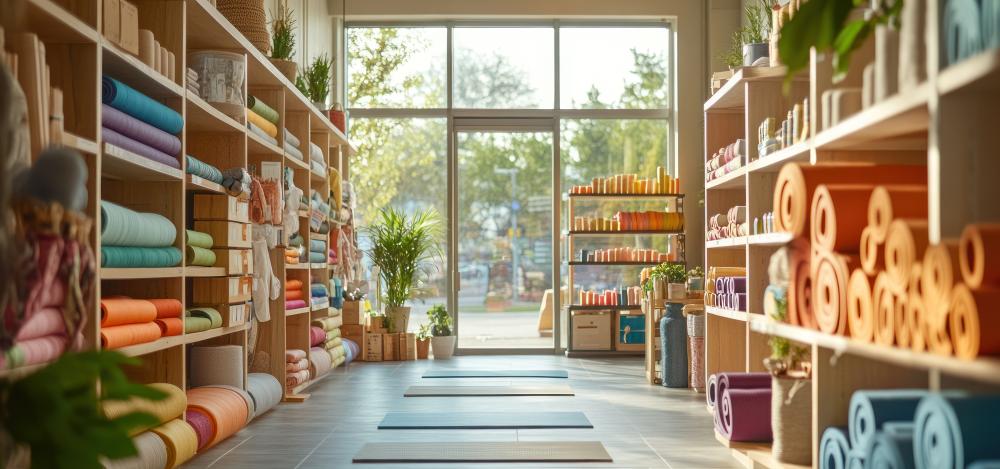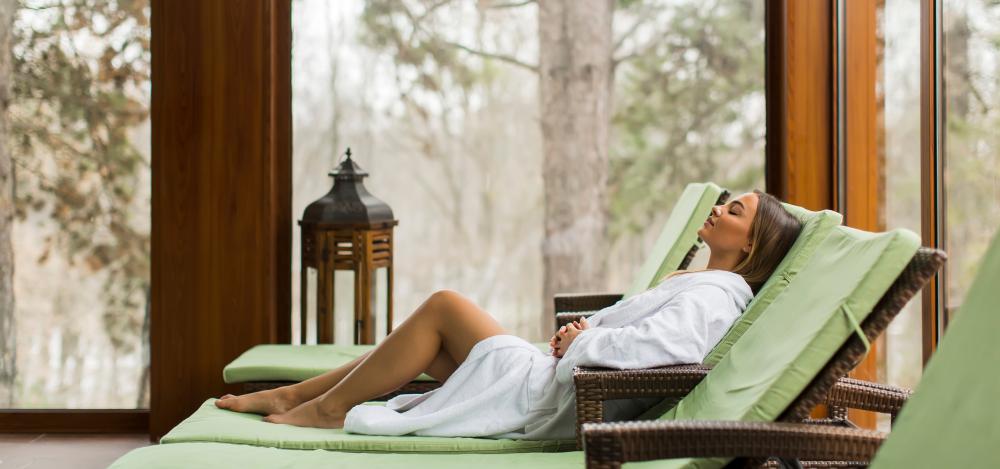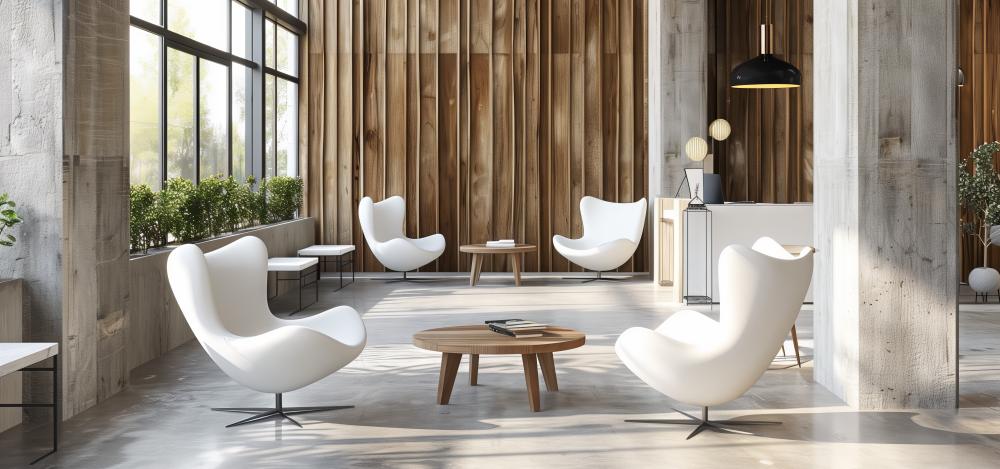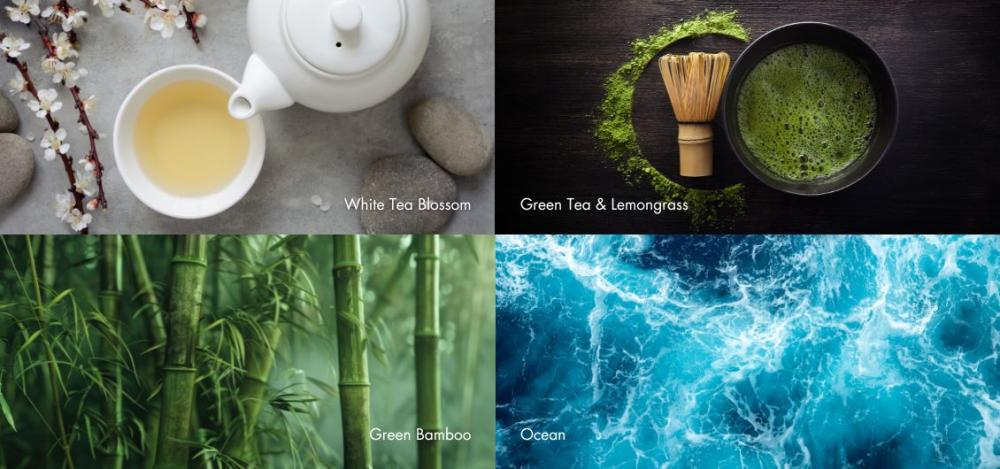In today’s world, where health and wellness have taken center stage, the wellness economy is growing faster than ever. Now valued globally at over $6.3 trillion1, the wellness economy creates exciting opportunities for industries, particularly hospitality, retail, and real estate, to enhance customer experience by integrating wellness-driven approaches. Increasingly, fragrance has emerged as a subtle yet powerful element to meet customers’ evolving demands.
The Connection Between Scent and Wellness
The connection between scent and wellness is rooted in science. Our sense of smell is directly linked to the brain's limbic system, which is responsible for emotions and memories. Many studies have shown that specific fragrances can reduce anxiety, improve mood, boost productivity, and even promote better sleep.
According to Givaudan, a top fragrance house, 89% of respondents believed scents could improve their well-being, bringing positivity to their lives2. With this in mind, customer-facing brands are exploring ways to infuse wellness into their spaces, using this as a new value proposition to impress and engage customers.
How Retail Brands Can Leverage Scents
Wellness has inspired new businesses, brands, products, services, and experiences. It has become such an important priority in our daily lives that many luxury brands have been integrating this into their in-store design as well as product offerings. One example is how Lululemon has expanded its product lines to include wellness-related items – yoga mats, water bottles, and meditation tools – and intertwined them with a holistic lifestyle approach to create a comprehensive wellness experience.
Consumers nowadays expect stores to be more than a place for transaction; there should be spaces designed for workshops or relaxation within the store. Introducing wellness fragrances can help brands meet these demands by turning shopping into a holistic wellbeing journey. Retailers can use fragrance strategically in different areas of the store – for instance, a relaxing scent at the entrance to invite customers in, an energizing aroma near the checkout to keep energy high, and soothing notes in dressing rooms to enhance customer satisfaction. Not only can such olfactory experiences help reduce stress, create positive mood among consumers, but they can also help brands communicate their commitment on wellness to customers in an authentic way.


In Hospitality, Fragrance Enhances Guest Experience and Loyalty
APAC is one of the fastest-growing regions in the wellness tourism market, estimated at USD 146.59 billion in 2024, with an expected compound annual growth rate (CAGR) of over 7% from 2024 to 20293. The adoption of healthier lifestyle, the changing perception of aging, and the rising tide of nomads, all contribute to this growth. It is no wonder that hotel brands that manage to integrate wellness into their business models are enjoying significant growth. One of such cases is Six Senses Hotels Resorts Spas, a luxury hotel brand with a strong wellness focus. Their properties in Thailand, Vietnam, and Bali are known for offering comprehensive wellness programs, including yoga, detox retreats, and personalized wellness plans.
While the hospitality industry has long used fragrance to enhance guest experiences, wellness-centered fragrances can take it to a new level. In hotels, for example, certain scents in the lobby, spa, and rooms can create an immersive wellness experience. A luxurious lavender or sandalwood aroma in the rooms can help guests unwind and sleep better, while invigorating scents like eucalyptus in spa areas can enhance the feeling of refreshment and relaxation. Hotels can even personalize fragrances to give guests a more memorable experience by offering different scent options for rooms. These unique experiences are likely to increase customer satisfaction and loyalty, as guests feel cared for in a deeply personalized way.


Real Estate: Creating Homes and Workspaces That Promote Well-Being
The wellness real estate sector in APAC region is expected to grow by USD 1.26 billion from 2024 to 2028 at a compound annual growth rate (CAGR) of 32.14%, according to technavio, largely due to the expanding luxury residential sector, green building initiatives, and the growing popularity of wellness-focused living environments4. Wellness has hence become a significant selling point, especially as people seek environments that support both physical and mental well-being.
Beyond just providing eco-friendly spaces, property developers and managers can enhance homes and offices with carefully chosen fragrances.
In residential settings, real estate brands can add scents to common areas such as the club house to promote comfort and relaxation. MQDC’s ‘The Forestias’ – Thailand’s largest property development project located in Bangkok – is designed as a sustainable ecosystem where people, wildlife and nature can live and evolve peacefully side by side. This creates a multi-generational community that brings together the best of leisure and conservation for a healthy and happy lifestyle.
For corporate spaces, introducing focus-enhancing scents in the common areas can add value to the tenants. For one thing, it will improve productivity and well-being among employees of the tenant companies; for another, it improves employer branding as employees’ rising demand for wellness-oriented workplaces is met.


Aligning Brands with the Growing Wellness Trend
The rise of wellness-focused initiatives is not just a trend; it’s a response to a fundamental shift in consumer values. People today are seeking products, services, and environments that reflect this priority. Brands that integrate wellness into their core offerings and spaces can differentiate themselves in competitive markets and appeal to the growing base of wellness-focused consumers.
In the end, wellness fragrances are not just scents but tools to create environments where people feel happy, healthy, and cared for. For brands looking to succeed in the wellness economy, fragrance is an opportunity to be at the forefront of this growing trend. To leverage wellness fragrances effectively, brands need to:
- select scents that align with their brand’s message and customer expectations;
- integrate scents across touchpoints, creating a cohesive, immersive experience;
- educate consumers on the rationale behind their decisions, as well as the benefits of wellness fragrances to foster a deeper connection to the brand
ScentAir’s Curated Wellness Fragrance Collection for Wellness Economy
ScentAir, a global leader in scent marketing, offers fragrances designed specifically to create wellness-driven environments. Here are four standout fragrances designed to elevate spaces while fostering a sense of calm and tranquility.
- White Tea Blossom (2717): With its subtle floral notes, White Tea Blossom offers a peaceful and calming ambiance, ideal for spas, hotel lobbies, and wellness centers. This fragrance helps guests unwind and feel at ease, enhancing their overall experience.
- Green Tea & Lemongrass (1105): This scent combines the refreshing qualities of green tea with the citrusy notes of lemongrass, promoting mental clarity and alertness. Suitable for retail spaces and fitness centers, Green Tea & Lemongrass invigorates customers and encourages a sense of refreshment.
- Green Bamboo (1512): Inspired by nature, Green Bamboo has a soothing, clean scent that brings the outdoors inside, ideal for creating a sense of tranquility in residential and commercial properties. Its natural profile offers a gentle, refreshing touch that helps occupants feel balanced.
- Ocean (0153): Ocean is a crisp, breezy fragrance that embodies the fresh vitality of the coast. This scent can be used in hospitality and retail spaces, providing an uplifting environment that feels both relaxing and revitalizing, making it an excellent choice for high-traffic areas.


Conclusion
As the wellness economy in APAC continues to expand, businesses in hospitality, retail, and real estate can leverage ambient scenting to meet rising customer expectations. ScentAir’s wellness fragrance collection offers the perfect way to elevate indoor spaces and create experiences that resonate with consumers’ wellness priorities. By embracing ambient scenting, businesses can align with the wellness economy, enhancing customer satisfaction and establishing themselves as wellness-conscious brands in the APAC market.
Contact us to learn more today!
Sources:
1. The Global Wellness Economy Reaches a New Peak of $6.3 Trillion––And Is Forecast to Hit $9 Trillion by 2028. Global Wellness Institute.
2. Givaudan (2020) Givaudan launches VivaScentz™, a leading edge fragrance innovation to enhance consumer well-being.
3. Asia Pacific Wellness Tourism Market Size & Share Analysis - Growth Trends & Forecasts (2024 - 2029). Modor Intelligence.
4. Wellness Real Estate Market Analysis North America, APAC, Europe, Middle East and Africa, South America - US, China, Australia, Germany, UK - Size and Forecast 2024-2028. Technavio.





